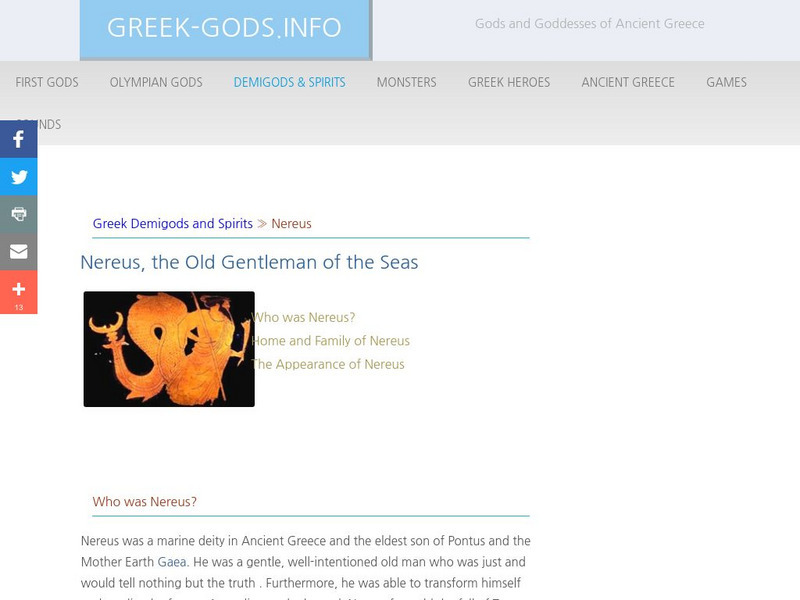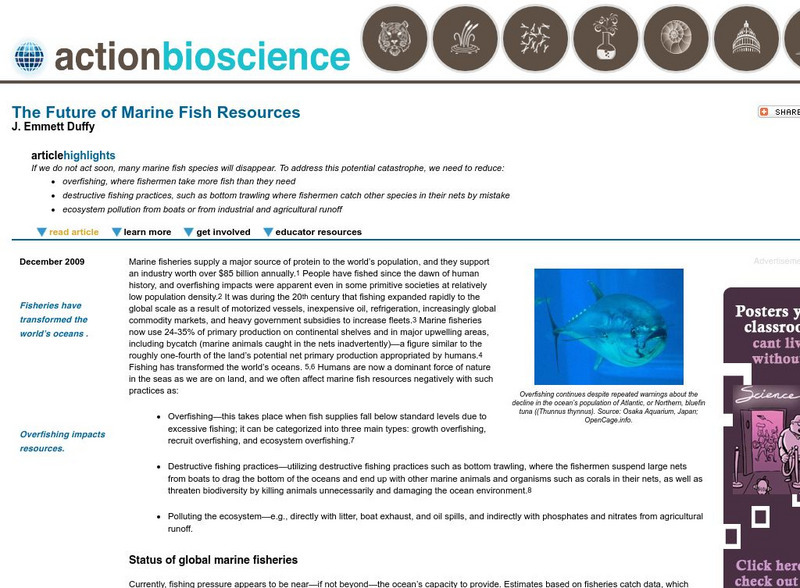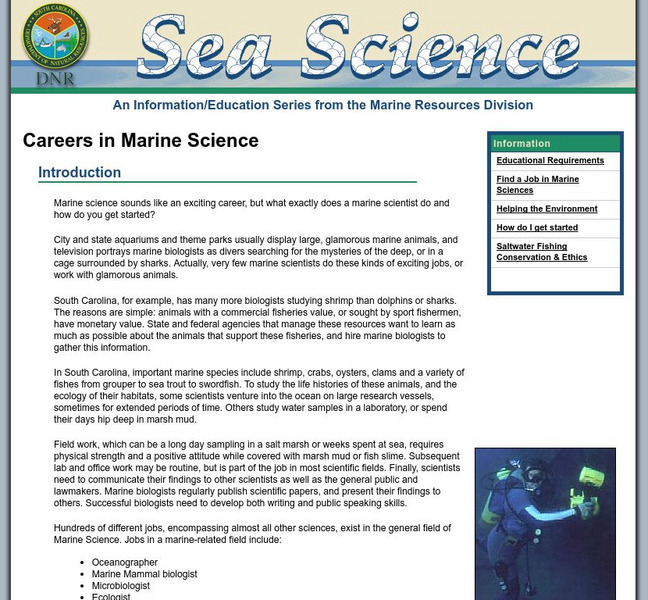Curated OER
Geologic Time Scale
For this geologic time scale worksheet, students use a word bank to complete the geologic time scale provided. Students fill in the chart as it relates to the geologic time scale.
Curated OER
Influential Scientists Vocabulary Multiple Choice Worksheet
In this influential scientists learning exercise, students read the definitions of 19 science professions. From 4 choices, students choose the correct name of the job that fits the definition. Example: studies birds (ornithologist).
Curated OER
Pirates: Quiz 95
For this pirates worksheet, students answer multiple choice questions about different pirates of the past. Students answer 12 questions total.
Curated OER
The Bottlenose Dolphin: Reading Comprehension
In this comprehension learning exercise, students read a selection about the Bottlenose Dolphin, then answer 5 multiple choice questions. Answers provided.
Curated OER
Super Scientists Code
In this science activity, students use the key code on the right to unscramble each of the scientists. They also match each of the scientists found to their correct description.
Curated OER
Is There Seaweed/Algae in Your Food?
Students discover that seaweed/algae is a small part of the resources the oceans provide. By investigating common household products, students discover that human senses are not enough to detect the presence of seaweed/algae in food.
Curated OER
Light at the Bottom of the Deep, Dark Ocean?
High schoolers participate in an inquiry activity. They relate the structure of an appendage to its function. They describe how a deepwater organism to its environment without bright light.
Curated OER
Let Your Ears Do the Walking
Students examine the effects of bycatching on water environments. They discover how echolocation works. They participate in a simulation of the process to use it while walking blindfolded.
National Geographic
National Geographic: Marine Protected Areas Management
In this lesson, students read a case study and debate the pros and cons of a Marine Protected Area (MPA) in the region. Then they select a Marine Protected Area and develop and present a management plan for it.
National Geographic
National Geographic: Marine Protected Areas Exploration
In this high school activity, students explore Marine Protected Areas on an interactive map and compare and contrast three case studies. They learn how the MPA classification system works in the United States, apply that system to...
Other
Noaa: Large Marine Ecosystems of the World
A detailed look at large marine ecosystems throughout the world. See animated maps showing the growth of chlorophyll in oceans, seas, and river systems.
NOAA
Noaa: National Marine Fisheries Headquarters
This home page provides links to fisheries organizations, research and regulations.
Careers New Zealand
Kiwi Careers: Marine Farm Supervisor
Description of the career of marine farm supervisor, including nature of work, outlook and earnings (in New Zealand), training and working conditions. Includes profile of a working manager of an off-shore seafood farm.
US Fish and Wildlife Service
U.s. Fish and Wildlife Service: Marine Turtle Conservation Fund
Seven species of marine turtles navigate the oceans. Six of these seven species are considered endangered. Learn about the Marine Turtle Conservation Act of 2004 and a little about these ancient animals and the threats to their existence.
Virginia Institute of Marine Science
Virginia Institute of Marine Science: Ghostbusting in the Chesapeake
Because abandoned crab fishing pots can create havoc in the marine ecosystem, scientists and fishermen are researching ways in which to collect them. In this instructional activity students will explore catch data collected by the...
Greek Gods
Greek Gods: Demigods & Spirits: Nereus, a Marine Deity
Learn about Nereus, a truthful and good-natured marine deity, who went from being half fish and half man to fully human and was father to 50 beautiful mermaids, the Nereids.
NOAA
Noaa: Ocean Facts on Marine Fish Habitats
The depletion of marine fish habitats from NOAA affects more than just the fish - it can affect you too! Learn facts about the importance of habitat preservation for science, and for people like you.
American Institute of Biological Sciences
Action Bioscience: The Future of Marine Fish Resources
An article and supporting resources address the potential of fish populations significantly decreasing with overfishing, careless fishing, and pollution from nautical vessels and runoffs.
Other
Scdnr: Careers in Marine Science
So you want to be a Marine Scientist? Learn about the Marine Science field and the career planning process.
Wonderville Media
Wonderville: Deep Sea Creatures
We all know that the ocean is home to many beautiful and mysterious creatures. Mysterious cannot begin to describe the fish living in the depths of the ocean. Imagine the kind of creature that lives thousands of feet underwater! Sunlight...
National Center for Ecological Analysis and Synthesis, University of California Santa Barbara
University of California: A Global Map of Human Impacts to Marine Ecosystems
Maps in different categories such as fishing, climate change, and pollution were pulled together into a composite map that shows the impact of humans on the world's oceans. Analysis at the time (2008) showed that 40% of the world's...
Language Guide
Language Guide: Los Animales Del Mar (Spanish)
This resource provides colorful pictures of sea animals interact with audio and the written vocabulary word as you move your mouse over the picture. This vocabulary would compliment a science unit on marine life.
NOAA
Noaa: Marine Turtles
The NOAA Fisheries gives a brief overview of the conservation efforts, threat, and the status of the seven marine turtle species. Be sure to click on the individual species to get more information.
NOAA
Noaa: Puffy the Puffer's Book of Fun Fish Facts
Step inside "Puffy The Puffer's Book Of Fun Fish Facts," and learn all about marine mammals. There are quizzes, games and lots of fun information.



















